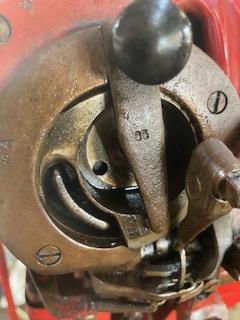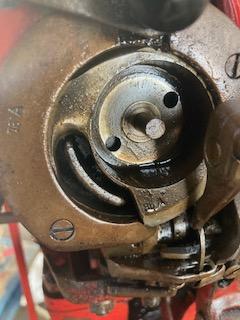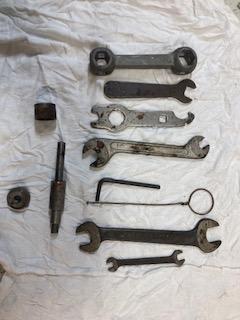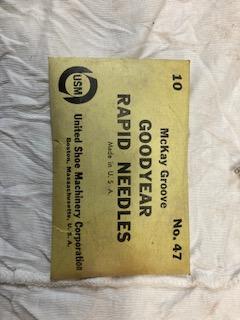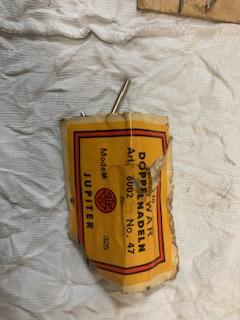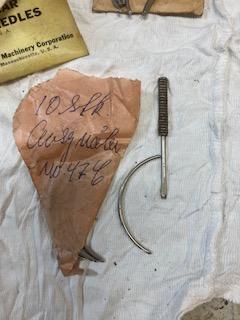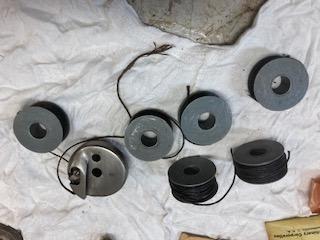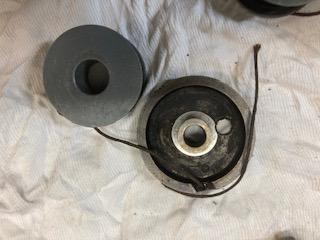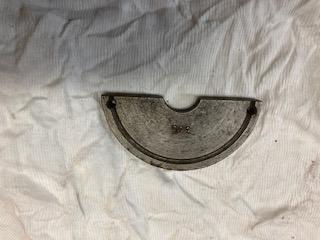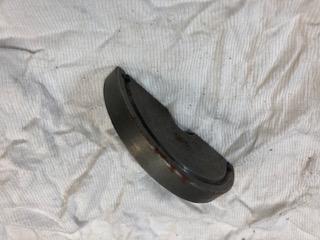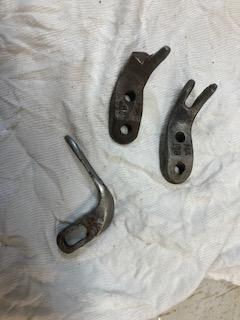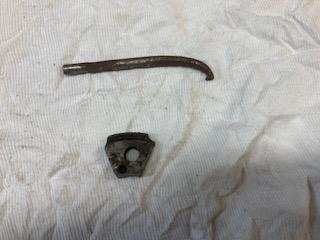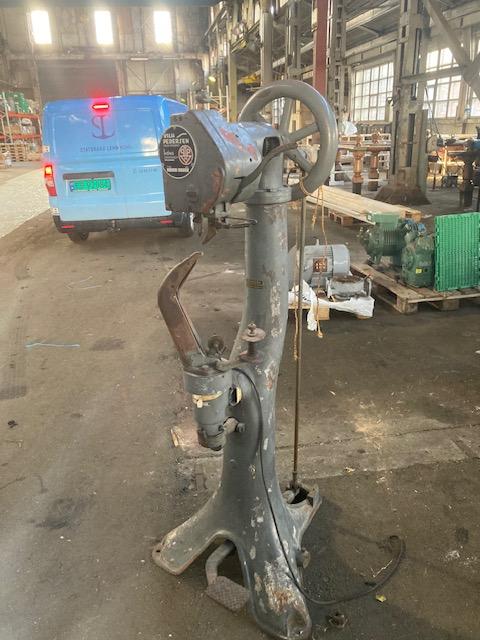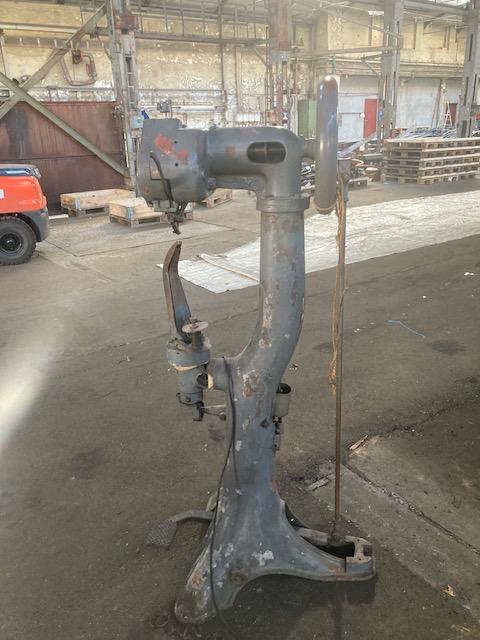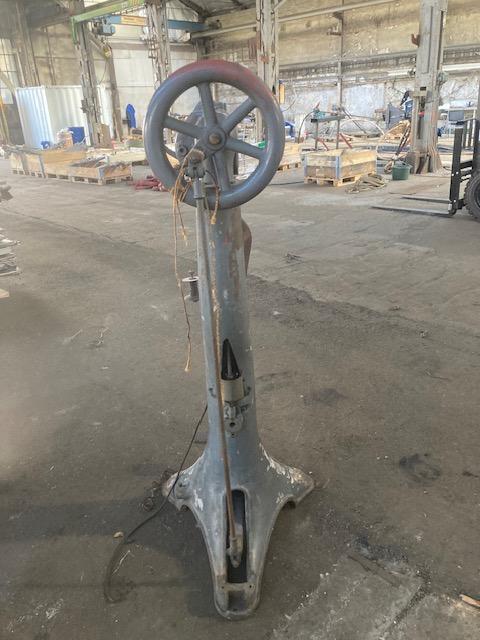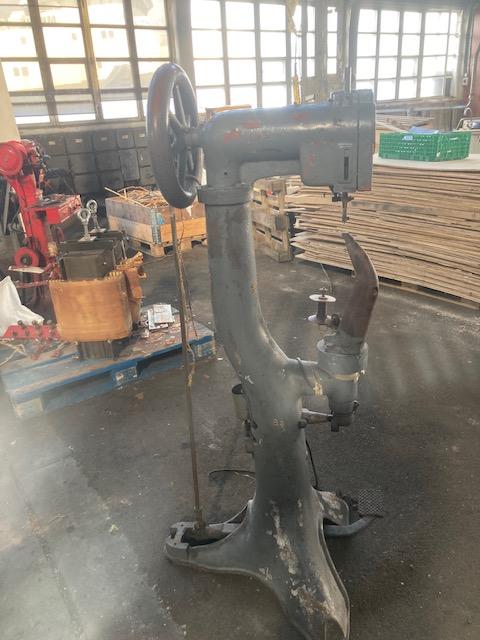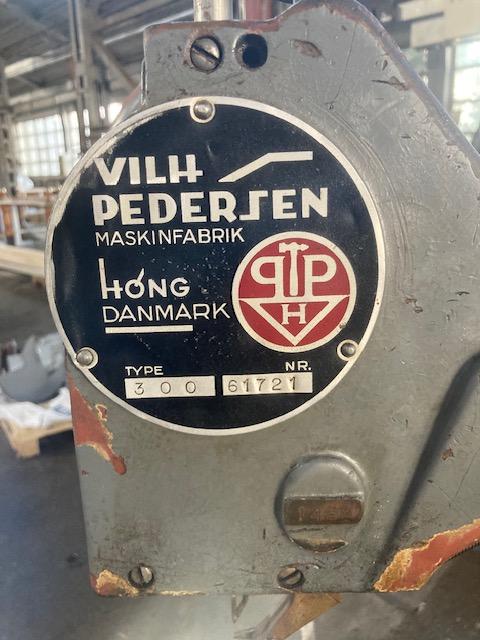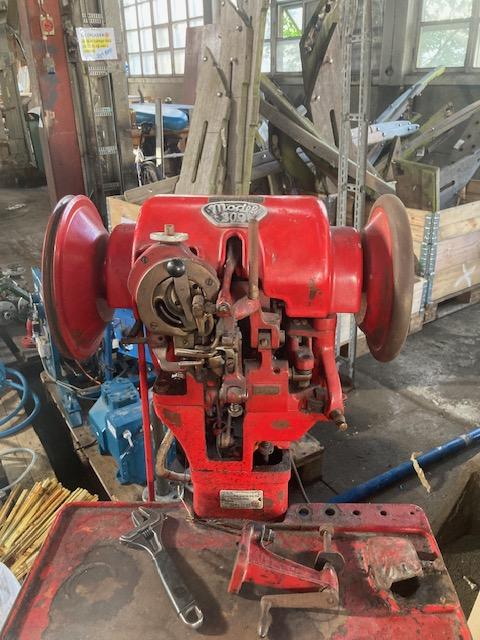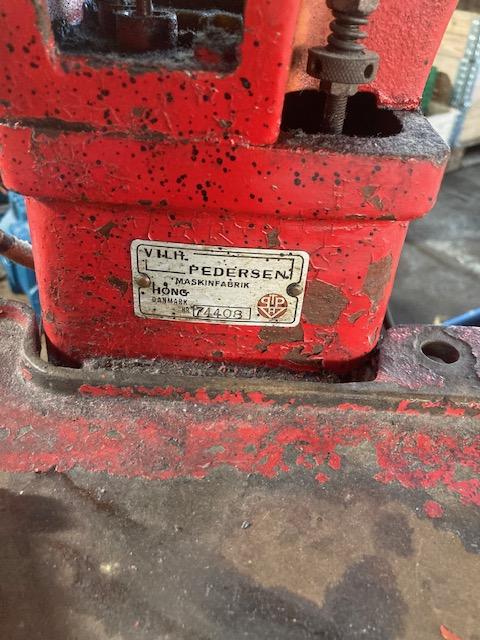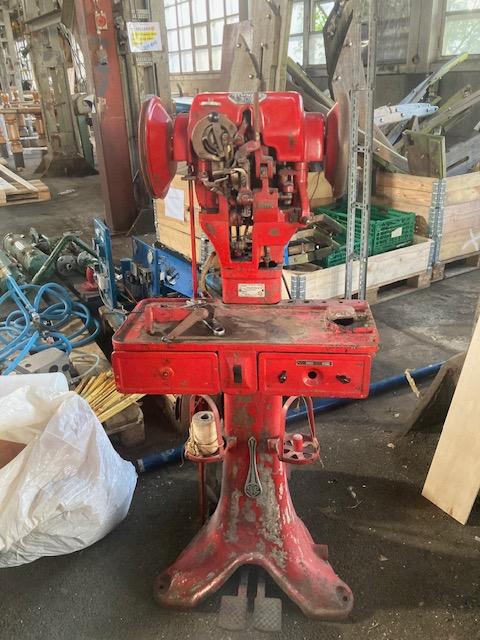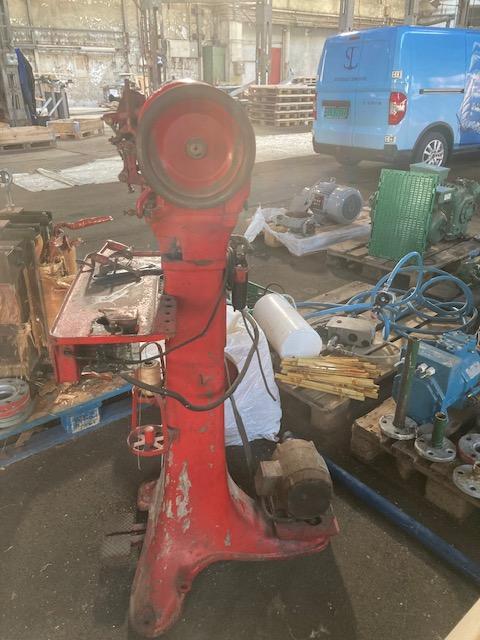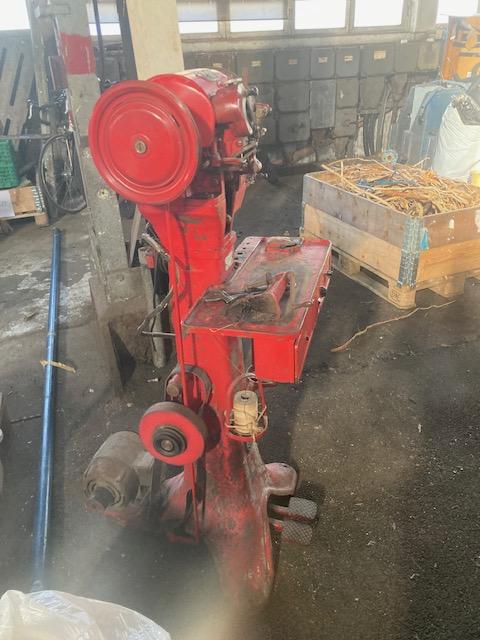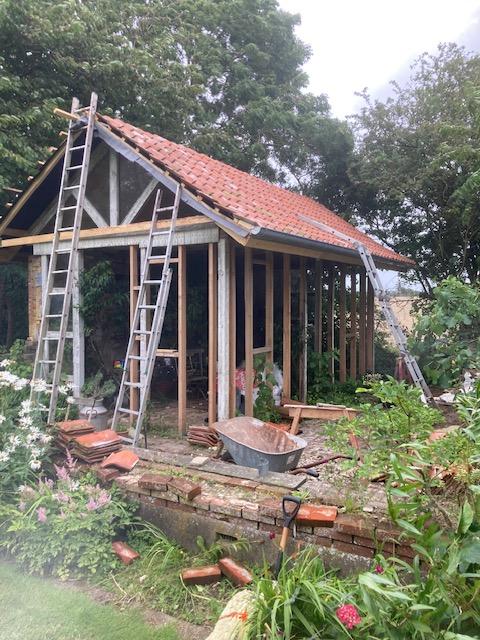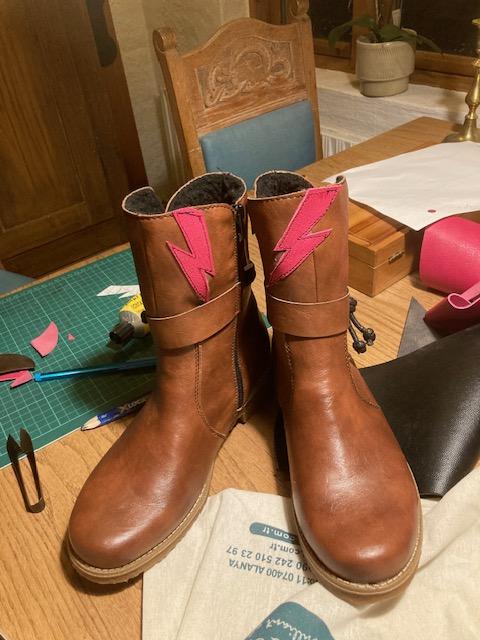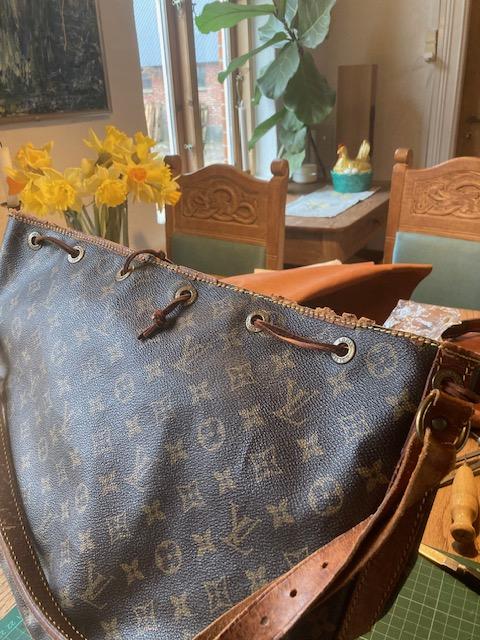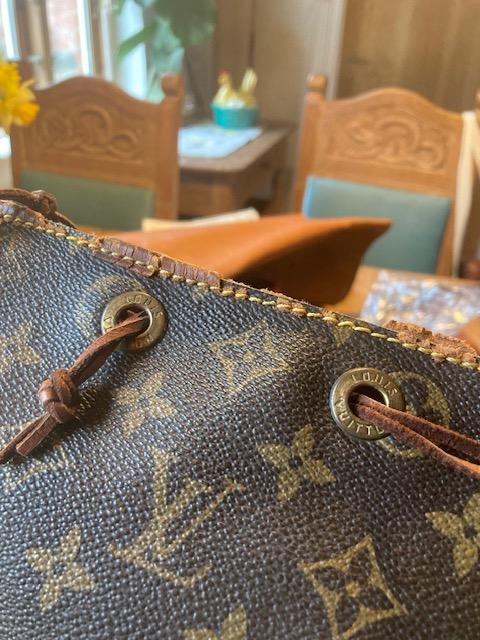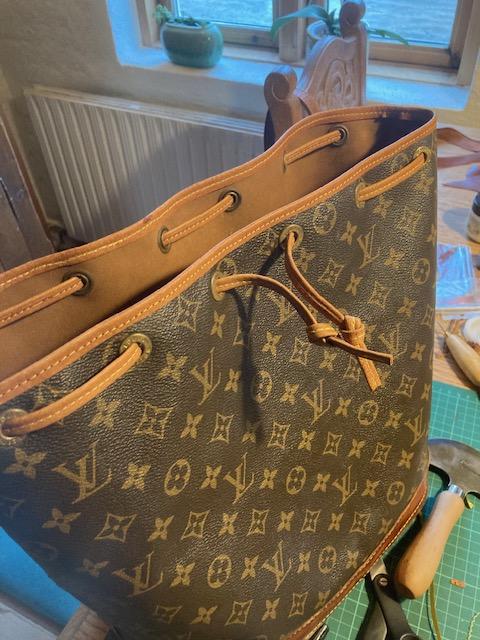-
Posts
756 -
Joined
-
Last visited
Content Type
Profiles
Forums
Events
Blogs
Gallery
Everything posted by Mulesaw
-
@Mablung Looking good, I like the combination of antiqued brass and the colours of the leather and the thread. Sewing straight across a strap weakens it by some degree, on horse tack I try my best to avoid that, either by only sewing lenghtwise or by making a pointed end on the back side, so the stitching also becomes pointed. Depending on how much your dog pulls I doubt it is gonna cause any problems, but if you get tasked with making a dog lead for a Newfoundland or something of a similar size, it might break. Some of my earliest halters for horses broke in places where I had sew across a strap, but again it all depends on how much the object on the other end pulls :-) Brgds Jonas
-
What tool as far as you know doesn't exist but you wish it did?
Mulesaw replied to x546JP's topic in Leather Tools
I would like a needle bender/grinder. So that if you got your hands on an old sewing machine with some out of stock needle system, you could make your own needles. For instance the Junker & Ruh SD28 hand outsole stitcher needs some special needles that are next to impossible to come by. I know that the machine would probably be expensive, but the idea of a dealer being able to make a few special needles, even for curved needle machines out of some stock steel appeals to me. -
Pedersen 309 and Pedersen 300 sewing machines
Mulesaw replied to Mulesaw's topic in Leather Sewing Machines
@Tastech I made a check on the inventory of the machine, and apart from sitting unused and unlubricated, it is really positive. Oh yes, I also found the missing grease cup cover, so that is mounted in the correct place again. there is minimal rust, and there are some tools that look like they are the original tools that must have come with the machine. Open end wrenches/spanners, a small screwdriver with a knurled metal handle, a wire "getthethreadthroughthesmallholes" thing plus a few other period correct tools, that look like old multi bicycle spanners. Plus: 6 bobbins 1 bobbin holder a couple of feed dogs, some of them might be for the insole stitcher, but all was in the small drawer of the outsole stitcher. 2 weird looking hook things, my guess without having researched much is that they are for the thread catcher on the outsole stitcher. A bunch of old needles marked "old needles" Some new needles for both machines. Something that might be an adjustment tool, (has got some red paint on it) A couple of metal parts that look like they are for the machine, but so far I don't know for what, a semicircular disc and a smaller disc. half a handful of various sized screws. Some homemade leather discs and a small rubber cushion. A black plastic organizer tray that looks like it is the original from the machine. My thought is that during the transport to Denmark at some point, if the drawer opened due to vibration or curiosity etc. it would be all too easy for some small parts to go missing. So I have emptied the drawer and I will bring all the small parts with me home in my suitcase. I'll also take the bobbin winder since that one is sitting fairly unprotected, so it is a bit at risk of being caught on something and the it would break. -
@JAM Glad to hear that it was all sorted out. I am trying to position myself to go down the road of future boot making. My initial idea was to sort of reverse engineer a couple of old riding boots to get an idea of how the patters for the various parts should look, and then make it to the size that will fit a custom made last. Did you do it in that way or did you just start out without looking at older boots individual parts first? I know there is a huge difference between dressage and jumping boots, in their stiffness, and I intend to make jumping boots at least for a start. I have to admit that I haven't got any experience about your answer regarding the treatment of the surface of the leather on new boots. I would guess that shoepolish and perhaps a leather conditioner would be how I'd do it. Brgds Jonas
-
Pedersen 309 and Pedersen 300 sewing machines
Mulesaw replied to Mulesaw's topic in Leather Sewing Machines
I am glad that I am not alone in that assumption about steampunk lamp producers. I'll take some more pictures of it. I was daydreaming about using it today, and thought about the possibility to use it for sewing alongside the edges of a belt. Not sure if it is a great idea, but I think that I want to try that sometime. And it should be able to sew some beefy leather with a hefty thread, so it might look sturdy. Also I reckon that there is some sort of fence that will help in keeping a fixed distance from the edge. Brgds Jonas -
Pedersen 309 and Pedersen 300 sewing machines
Mulesaw replied to Mulesaw's topic in Leather Sewing Machines
Thanks Tastech, I'll try to get some pictures of the needles and the awl, but today is pretty busy, so it might not be until tomorrow that I get it done. Blake stitcher, I'll try to google that too. After googling McKay stitcher last night, I found a lot more compared to when I searched for a Pedersen type 300. I really like that it is foot operated and with a heavy flywheel. The simplicity appeals a lot to me, and also the rugged yet elegant lines of the castings of those old machines. The foot pedal is cast with a nice "knurled" surface to prevent slipping, and the pedestal has got some nice lines to it as well. The only part that I can see is missing so far from the outsole stitcher, is the end of the grease cup used for the intermediate belt wheel. But I can make a new one of those on the lathe at home if needs be. I guess that it could be a regular 1/4" pipe thread, so I might go that route first and see if I can adapt some pipe thread bushing. The McKay stitcher only has got the one needle that is currently in it, so I have to look into what needle system that is and then find out if they are still available. Brgds Jonas -
Pedersen 309 and Pedersen 300 sewing machines
Mulesaw replied to Mulesaw's topic in Leather Sewing Machines
Thanks Constabulary, I think it was actually you who supplied a manual for a 317 that I have been looking at in an old post :-) I'll try to check out all of those and see if any manuals will be available. It seems as some of the Landis machines are similar to the Pedersen machines as well. From what I have been able to see on Youtube so far, the outsole stitchers are more common than the McKay style insole stitcher. But I have just searched for it one evening, so I hope that I will find some more information on how to set up and use etc. Anyway both machines needs a heavy cleaning and oiling. And I need to get them transported from Norway to Denmark somehow. But at least they are safe now from someone wanting them to make a steampunk lamp or something along those lines. Brgds Jonas -
Pedersen 309 and Pedersen 300 sewing machines
Mulesaw replied to Mulesaw's topic in Leather Sewing Machines
Hi Tom If you have the space for the clicker press I would get it if I were you! Offers like that only comes once in a 100 years. And I suppose that if he is retiring, then theoretically you could perhaps continue with his insole production for one or two of his old customers, that would also be branching out, albeit not in the horse world. Depending on how difficult it would be to make insoles, I am guessing that it was one of those tasks that could be handled by a high school kid with a bit of technical flair. But then you would have to employ a person, and that might be more trouble than it is worth. Based on my collection of various woodworking machinery, I can honestly say that I have very rarely regretted getting something old of industrial quality. the quality of older machines is normally first class. And I think that even on a large clicker press - you are able to make small items. I have been toying with the idea of making key fobs out of old saddles, I just need to make a die for it. I guess that my drill press will be sufficient to work as a press in those cases, but I would have to experiment with it. The good news on these sewing machines is that since liberally spraying everything with WD40 last night, they move a lot better today than yesterday. Still I think that they need a more thorough cleaning and a good oiling with sewing machine oil or similar, to run as smooth as I like. Brgds Jonas -
Pedersen 309 and Pedersen 300 sewing machines
Mulesaw replied to Mulesaw's topic in Leather Sewing Machines
Thanks a lot Wiz, McKay style insole stitcher, that gives me somethig that I can try to Google. :-) I had tried with 10 different things like boot stitcher etc, but nothing really came up. I have found a manual for a 317 in here, that should be a bit more modern than the 309, but I guess still the basic same principle. Both machines need a bit of oiling, and I just sprayed them with some WD40 to get them to move a bit more freely. At least I can turn the 309 a full revolution now, but it still isn't moving super easy. The 300 seems to have a bit fewer moving parts, and that one is moving a lot easier already. I like that it is manually foot operated, so the only electric part on it is the heated cup for wax/tar, and I also like that both of them are so incredibly sturdy built. It is a pure joy to see and spin something that was clearly made to last. Brgds Jonas -
While browsing the classifieds here in Norway while we are in dry dock, I came across an ad where someone gave away 2 Pedersen sewing machines for free! I quickly established a contact and in an incredibly stroke of luck apparently I was the first one to show an honest interest. I got a friend to go along for the ride to help carry the machines, and about an hour later I find myself to be the lucky owner of a Pedersen 309 sole sewing machine, and a Pedersen type 300 sewing machine. The 309 comes complete with bobbins and extra needles etc, and that one I have seen mentioned before in here. The type 300, I haven't been able to dig up any information about. As far as I have been able to find, it is still some sort of sole stitcher, but if anyone has got a more correct name or maybe even a manual for something similar, it will be greatly appreciated. Both machines are in need of a thorough cleaning and oiling to run freely again. But none of them are mistreated. The next big challenge is to get them sent from Norway to Denmark, but for the price that I didn't pay to get them, there should still be some money left that I can use for shipping.
-
Upgrade your passwords - secure your accounts
Mulesaw replied to Northmount's topic in Computer Help
I use either the vehicle inspired passwords, or I use song that is translated into a password. A lot of places requires both capital letters, special signs, small letters and a number to accept your password, and the song trick works for me, you just replace the words in the songs first line or refrain or whatever part you like with either letters, special signs or figures. Old Mc Donald had a farm, the verse with a cow could be: Aot#hh1C (And on that farm he had 1 cow) I know it is supposed to be a cow, but in this case it doesn't matter. On another note: Spammers are annoying, and generally I think that @Northmount and the rest of the moderators are doing a great job in keeping a tight ship. There is very little spam that compared to what you would expect given the number of users etc. in here. Brgds Jonas -
Show Your Shop - It's been a while!
Mulesaw replied to Brooks125's topic in All About Us and Off Topic
Like: It is going to be organized and spacious, and cozy with a wood burning stove for heating. Don't like: Still not finished. Except for ridge tiles this is still the state of the shop.. (I have been too busy with all other kinds of project to make any progress here) -
I read it as palm the first time, it wasn't until now that I noticed the s :-) Another thing is that I find it really practical to have a polished ball been hammer. I was taught to rivet using the ball end of the hammer, and on copper rivets you can make such a beautiful head if the ball is polished. Mostly I don't use a domed head maker (or whatever the name of it is), the rivets just look better with all these small facets that are smooth and shiny. So I disagree on the overkill :-) Brgds Jonas
-
Help -how can I stitch?
Mulesaw replied to rastanley's topic in Saddle Identification, Restoration & Repair
@rastanley I'd buy a small envelope of curved needles, get some that are around 1.5" (38 mm) in length. (As far as I remember the strange measuring system of curved needles, they measure the distance between the eye end and the tip straight across. Kind of like the opening of the needle). Also get a curved awl. For most repair jobs on saddles I use a curved awl that is round. You can also get one that is diamond shaped, but normally the leather where it needs patching is worn really thin, so I prefer to make as small a hole as possible - hence the round awl. Try to use a backstitch, so you only have one thread and one needle. The curved awl will help navigating to the next hole. Also you'll probably need some pliers to steer and push the curved needle. They tend to be weirdly difficult to use just by hand. Brgds Jonas -
Looks really good. I like the shape of the handle on the cobblers hammer. Such nice curves :-) The Tung oil finish looks great, and I like that you haven't sanded the handles down to "new" wood. There is just the right patina on the handles now.
-
Flashy stable boots repair
Mulesaw replied to Mulesaw's topic in Shoes, Boots, Sandals and Moccassins
Thanks She wanted it done as cheap as possible, so elastic was never even discussed :-) I think she got those boots at some kind of sale, so she didn't want to spend too much on it. I found this to be a fun repair job, and it really didn't take long plus I had those pink scraps lying around, so it was just a quick and easy repair. Brgds Jonas -
Flashy stable boots repair
Mulesaw replied to Mulesaw's topic in Shoes, Boots, Sandals and Moccassins
Thanks Tom, She's really funny to be around, so I'm pretty sure that she flashes those boots the bet she can. Brgds Jonas -
Flashy stable boots repair
Mulesaw replied to Mulesaw's topic in Shoes, Boots, Sandals and Moccassins
Thanks, I think they turned out pretty hot myself :-) Brgds Jonas -
Flashy stable boots repair
Mulesaw replied to Mulesaw's topic in Shoes, Boots, Sandals and Moccassins
Thanks, and yes kind of the same idea, if you can't hide the defect you can instead make certain that people can see that you have dealt with it. Brgds Jonas -
One of my regular customers had somehow managed destroy some short boots that she had just bought. She had forced her foot into them without opening the zipper - and the thin leather of the shaft had ripped apart. As far as I understood, her old similar boots had elastics in the side, and out of old habit she had just forced her foot into them as soon as she got them without using the zipper.. She called me and asked if I could do anything about it, and they were intended to be used as stable boots, so looks really didn't matter, she just liked them since they were like her old and well worn (and slightly wider) boots. She had gotten them on a sale, so it was technically just a question of getting them back to some kind of working state as cheap as I could. The jagged rips were maybe 3.5" in each and not along a stitching but right down the skin itself, not in the same spot but in the front so it was really visible. After looking at the problem and pondering over different solutions, I decided that it was easier to make something that would look like a decoration rather than a repair patch. I called her and suggested the idea and she loved that idea, so I was given free hands to make something a bit flashy. The result was two bubblegum pink lightning bolts on the front part of the boots. So now they look like some cartoon hero boots, and she is the fastest parent in the local horse club stable:-)
-
Repair of leather edge on Louis Vuitton bag
Mulesaw replied to Mulesaw's topic in Satchels, Luggage and Briefcases
Thanks I like it when I am able to make a nice repair job. The customer heard about me from a friend of hers, whose bag I have repaired about 2 years ago. Also some LV bag as far as I remember. Brgds Jonas -
Repair of leather edge on Louis Vuitton bag
Mulesaw replied to Mulesaw's topic in Satchels, Luggage and Briefcases
Thanks, I have no idea if it is an original LV bag. In Denmark most people automatically assume that if you have a bag like this, it is a fake that is bought in Thailand. But it was really well made, so it might have been real. Brgds Jonas -
This time at home, a customer asked if I could have a look at her Louis Vuitton bag where the upper folded leather edge had almost completely deteriorated. I had some light beige pig skin that looked like it was the same that was used originally, and I googled to see if LV used pigskin, and the page I found confirmed this. A trip to the local sewing shop to find a matching colour of yellow and then it was just a matter of carefully removing the old one and sewing on a new edge. The customer had at one point renewed the closure strap with some fairly thin leather strap. She asked if I could see if I could find something a bit beefier. After some Googling I found a picture of the same model of bag, and it looked as it was originally made with a sewn closure strap matching the upper edge. End result: A happy customer and a bag that can be used for a couple of years more.
-
Looks great. I especially like the padded belt. That is a nice touch!
-
looking good. And a super nice gesture. It is a great way of saying thanks to someone.



